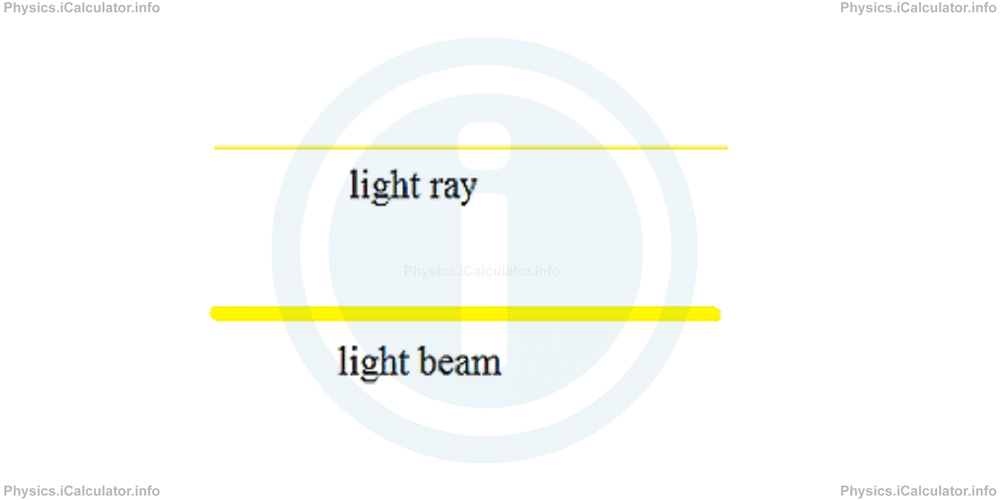Menu
Physics Lesson 12.1.2 - Rays and Beams. Propagation of Light
Please provide a rating, it takes seconds and helps us to keep this resource free for all to use
Welcome to our Physics lesson on Rays and Beams. Propagation of Light, this is the second lesson of our suite of physics lessons covering the topic of Features of Light, you can find links to the other lessons within this tutorial and access additional physics learning resources below this lesson.
Rays and Beams. Propagation of Light
We often use terms like "ray" and "beam" to represent light and its propagation is space. For example, we say "light rays enter in my room through the window" or "I am producing a light beam when turning on my torch". However, ray and beam they are not synonyms; rather, they represent different concepts. First, it is important to understand that ray and beam are artificial constructs. Ray is usually associated with geometric optics and helps us understand the light propagation, and so, it helps to visualize how light propagates through an optical system. In this consideration, the ray is one-dimensional and has a zero cross-sectional area (zero thickness), and therefore it is not physical. Beams have a finite cross-section and they are typically associated with lasers, for example. Hence, if we use the language of geometry we can compare rays with straight lines and beams with long cylinders of light. In this sense, you can think of the beam as being "made up of many rays" - so beams can be thought of as "bundles of rays".

Both rays and beams contain a very large number of light waves travelling at a very narrow space. As a result, waves overlap and we are not able to discern the waveform anymore. (Another reason why we are not able to see the waveform of light is the very high frequency (the oscillation rate) of light. As mentioned above, light waves oscillate at frequencies of range 1014 Hz. This means light waves oscillate at 1014 times per second. Even if we had powerful microscopes, we would not be able to "catch" such fast oscillations.)
Thus, we can say that light rays and beams are a proof that light propagates in straight lines, despite their sinusoidal form.
You have reached the end of Physics lesson 12.1.2 Rays and Beams. Propagation of Light. There are 6 lessons in this physics tutorial covering Features of Light, you can access all the lessons from this tutorial below.
More Features of Light Lessons and Learning Resources
Whats next?
Enjoy the "Rays and Beams. Propagation of Light" physics lesson? People who liked the "Features of Light lesson found the following resources useful:
- Ray Feedback. Helps other - Leave a rating for this ray (see below)
- Optics Physics tutorial: Features of Light. Read the Features of Light physics tutorial and build your physics knowledge of Optics
- Optics Revision Notes: Features of Light. Print the notes so you can revise the key points covered in the physics tutorial for Features of Light
- Optics Practice Questions: Features of Light. Test and improve your knowledge of Features of Light with example questins and answers
- Check your calculations for Optics questions with our excellent Optics calculators which contain full equations and calculations clearly displayed line by line. See the Optics Calculators by iCalculator™ below.
- Continuing learning optics - read our next physics tutorial: Reflection of Light
Help others Learning Physics just like you
Please provide a rating, it takes seconds and helps us to keep this resource free for all to use
We hope you found this Physics lesson "Features of Light" useful. If you did it would be great if you could spare the time to rate this physics lesson (simply click on the number of stars that match your assessment of this physics learning aide) and/or share on social media, this helps us identify popular tutorials and calculators and expand our free learning resources to support our users around the world have free access to expand their knowledge of physics and other disciplines.